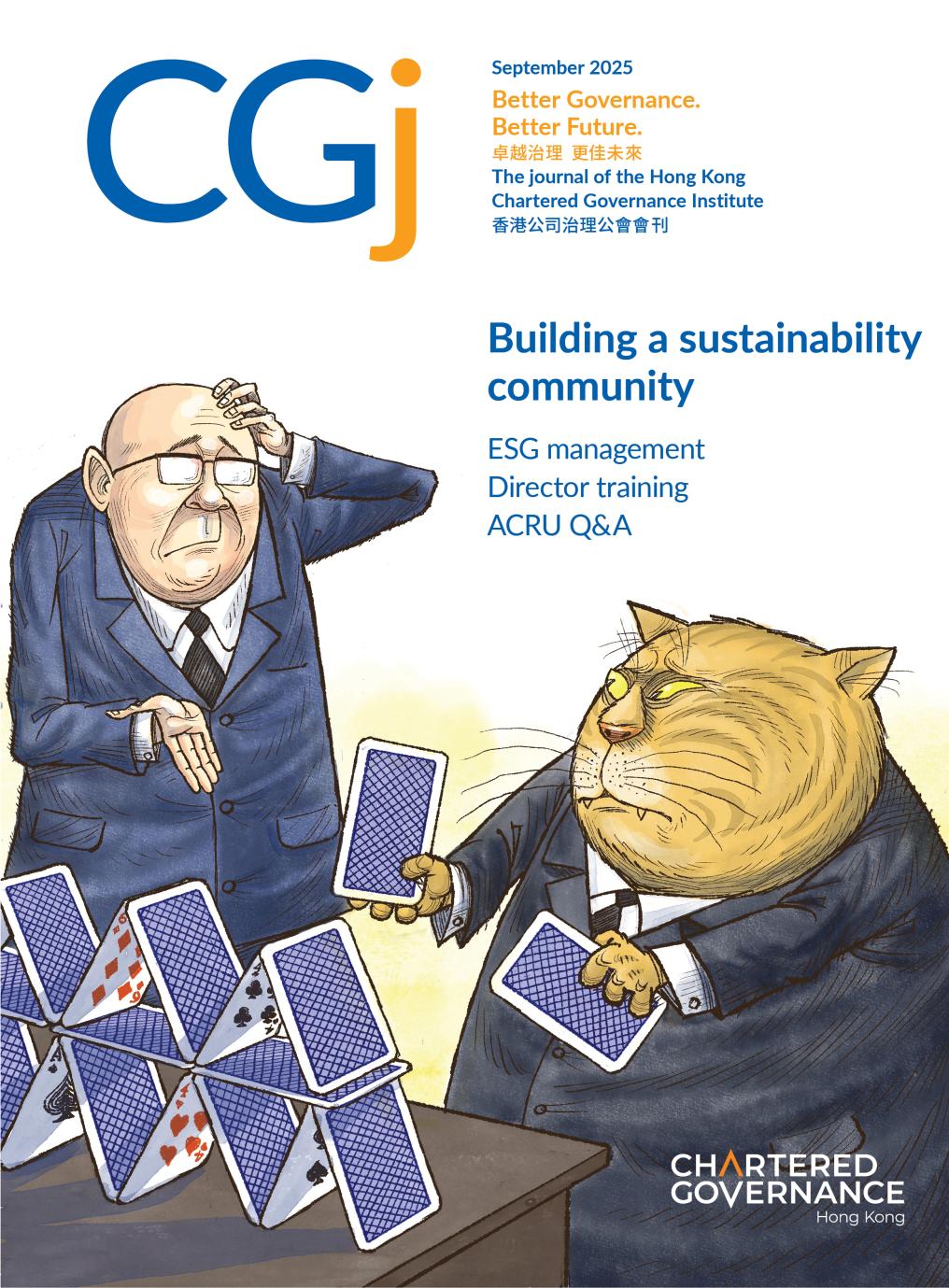
The financial case for ESG management
Dr Calvin Kwan, Managing Director of Sustainability and Risk Governance, Link Asset Management Ltd, discusses the evolution of ESG in the real estate business and how corporates can leverage sustainability to deliver financial value.
Highlights
- Link treats sustainability as a strategic imperative rather than a compliance exercise, instilling ESG into business fundamentals such as distributable income, operational efficiency and climate resilience
- today’s ESG leaders and governance professionals must also understand accounting, finance and investment, as well as stakeholder expectations, so that sustainability carries real strategic value
- green and sustainable finance tools are only effective when they drive real behavioural change, not just help organisations meet minimum targets
How has your understanding of ESG evolved over the years and how do you define it today in the context of real estate investment?
‘ESG, at its core, is about compliance, a simple example being the ESG disclosure reporting requirements mandated by The Stock Exchange of Hong Kong Limited. ESG is how an organisation responds to the world around it, including to regulations and stakeholder expectations. In contrast, sustainability is more forward-looking – it’s about how an organisation shapes the world around it.
Earlier in my career, we talked about “corporate social responsibility” (CSR). I’ve always focused on sustainability, but over time the language has shifted and evolved, from CSR to ESG and, more recently, to sustainability. We now distinguish ESG as being a compliance issue and sustainability as being strategic.’
How do you cultivate a culture of sustainability within such a large and complex organisation as Link?
‘It depends on where the ESG or sustainability role sits in an organisation. If it’s in marketing or communications, the focus tends to be on the message. If it’s in legal, it’s often about compliance. More progressive organisations have a standalone ESG function reporting directly to a senior executive, which can sometimes be the CEO. Where you place the role reflects how seriously the organisation takes it.
That said, cultural change doesn’t happen through structure alone. It certainly helps to set the tone from the top, but that on its own is not enough.
Whoever leads sustainability must have the ability to speak the language of multiple stakeholders – finance, operations, legal and investment. For instance, if you can explain how a sustainability initiative reduces costs, that resonates on an operational level. If you can show it generates revenue, even better. But you must know how to frame it in business terms.
One of the challenges we see is that many sustainability professionals still come from environmental science or communications backgrounds. That’s changing, but it’s important that ESG leaders today also understand accounting, finance and investment. That’s where real strategic value lies and where sustainability can move from being a compliance function to a value creation driver.’
“Whoever leads sustainability must have the ability to speak the language of multiple stakeholders – finance, operations, legal and investment.”
As investors become more ESG-conscious, how do you shape your strategy to resonate with them?
‘First, we need to be clear on who our key stakeholders are. Link is a 100% free-float company, which means we must listen to a broad and diverse investor base. Stakeholder mapping and prioritisation are therefore crucial.
You can’t assume what investors want – you need to ask them. Do they want steady returns, growth or long-term stability? Once you know this, you can align your ESG priorities to meet those expectations.
Once we know what our investors value, we work backwards. To illustrate, if stable distributable income is a key concern, then we must focus on the business fundamentals that support it – operational efficiency, tenant demand and climate resilience. These are sustainability issues, although they may not be labelled as such.’
“You can’t assume what investors want – you need to ask them.”
Can you give an example of how sustainability affects financial performance at Link?
‘Sure. Distributable income is essentially revenue minus cost. Most of our revenue is rental income. How we can grow that is either through raising rents or developing properties that generate higher demand.
To do that, you need to make properties more desirable, safer, more resilient and attractive. Take extreme weather events – for instance, if a property floods, people can’t enter and rental income is immediately affected. We need to identify which assets are most exposed, based on insurance claims, past flood history and even something as basic as location data from Google Maps, and act accordingly. We also work with external service providers to model climate risks, which helps inform investment or asset management decisions.
On the decarbonisation front, the financial implications are equally clear. Governments may introduce carbon pricing, or investors may demand carbon reductions. Either way, it hits your bottom line, whether through operational cost increases or access to capital. Consequently, climate and decarbonisation strategies are not optional – they are part of managing financial risk and protecting long-term income.’
What green finance tools has Link adopted and what benefits have you seen?
‘That’s a complex question. Link was a pioneer in Hong Kong’s green finance space. We issued our first green bond in 2016 and continued to issue green and sustainable instruments up to around 2020. But more recently, we’ve grown more cautious about how the market is evolving.
I believe green and sustainable finance has tremendous potential, but the reality is that too few players are genuinely using it as a tool to drive meaningful change. Many are simply meeting minimum targets in order to tick boxes.
At Link, we hold ourselves to a higher standard. Our sustainable finance framework requires that each instrument be linked to three KPIs, one each for environment, social and governance. In contrast, many instruments out there focus solely on environmental metrics, such as energy savings or emissions, which makes them environmental but not sustainable products.
For highly rated companies, including Link, that already enjoy low borrowing costs, the financial incentive for issuing green bonds is minimal. We’re not gaining much on pricing. That’s why I believe green finance may work better for mid-tier or lower-rated companies – those borrowing at higher rates – because there’s real room for improvement. Green finance can be a powerful tool to encourage progress if it provides that incentive.
But for organisations like us, where ambitious decarbonisation and ESG targets are already in place – for example, our operational net-zero target by 2035 – the question becomes whether there is any additionality. Are we doing anything extra as a result of green finance? If not, then calling it green or sustainable financing is a bit of a stretch.
For it to work, both the borrower and the financier need to take it seriously. It must be about driving change, not just window dressing.’
How have you integrated green finance tools into Link’s broader strategy and what benefits have you seen?
‘We’ve worked closely with banks to develop new forward-looking targets that are meaningful to both parties. For instance, water savings was an area of interest for our financiers and it’s also something we care about. For that reason, we built water reduction targets into our sustainability-linked financing framework.
We’ve also introduced green leases for our tenants. The aim there is engagement and education, helping tenants understand what they should be monitoring and why it matters.
A recent case in point is our sustainability-linked insurance programme. Over the last year, our average insurance premiums for real estate dropped by around 3%. We’ve already achieved a 12% reduction, with another 8% potentially on the table. These are double-digit improvements, prompted by how we’ve managed our climate resilience performance and communicated it clearly to insurers.’
What advice would you give to governance professionals trying to instil ESG in their organisations?
‘Start by understanding your business model. How do you make money? Where are the risks and opportunities? Then ask what will affect this business model in five to 10 years? That’s where your ESG focus should be.
The tone from the top is critical. ESG must be a board-level discussion because, ultimately, it’s about the long-term sustainability of the organisation. The board needs to be actively involved and there must be transparency and accountability in how ESG is reported. At the same time, management has to take ownership of the process and whoever is leading ESG must, as already mentioned, be able to speak the language of different stakeholders.
Lastly, carry out proper stakeholder engagement, not just as a box-ticking exercise but as a genuine prioritisation of who matters and what they care about. Governance professionals are in a unique position to make this happen. The key is to ask the right questions and to keep asking them.’


